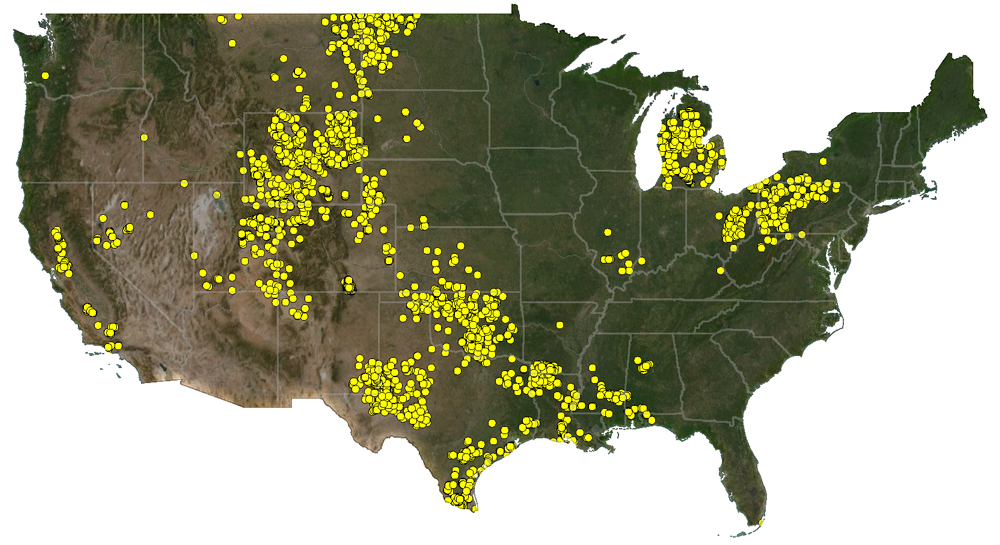AU.S. Geological Survey (USGS)-led study estimated between 5 million and 19 million tons of lithium reserves are located beneath southwestern Arkansas, the agency announced in October 2024. Participating in the study was the Arkansas Department of Energy and Environment’s Office of the State Geologist. If commercially recoverable, the amount of lithium present would meet projected 2030 world demand for lithium in car batteries nine times over.
“Lithium is a critical mineral for the energy transition, and the potential for increased U.S. production to replace imports has implications for employment, manufacturing and supply-chain resilience,” said USGS Director David Applegate. “This study illustrates the value of science in addressing economically important issues.”
The lithium reserves are in a geological unit known as the Smackover Formation, a relic of an ancient sea that left an extensive, porous and permeable limestone geologic unit that extends under parts of Arkansas, Louisiana, Texas, Alabama, Mississippi and Florida, according to USGS.
“Our research was able to estimate total lithium present in the southwestern portion of the Smackover in Arkansas for the first time,” said Katherine Knierim, a hydrologist and the study’s principal researcher, in a USGS release. “We estimate there is enough dissolved lithium present in that region to replace U.S. imports of lithium and more. It is important to caution that these estimates are an in-place assessment. We have not estimated what is technically recoverable based on newer methods to extract lithium from brines.”

The Smackover Formation in the South-Central U.S. shows great promise for future lithium production.
Source: USGS
Supply Meets Demand
The USGS says the U.S. relies on imports for more than 25% of its lithium. The agency estimates there is enough lithium brought to the surface in the oil and brine waste streams in southern Arkansas to cover current estimated U.S. lithium consumption. The low-end estimate of 5 million tons of lithium present in Smackover brines is also equivalent to more than nine times the International Energy Agency’s projection of global lithium demand for electric vehicles in 2030.
As reported in the 2025 Arkansas Economic Development Guide produced by Conway Custom Content, 60 years of bromine production in the region has literally laid the groundwork for work in the lithium space. “Among the projects looking to access the lithium deposits found in the Smackover Formation in southern Arkansas,” reported Site Selection’s Adam Bruns, “are Vancouver, B.C.-based Standard Lithium with more than $1.6 billion of plans in Lewisville and El Dorado (in addition to East Texas); ExxonMobil’s big plans for Walker Creek; and Albemarle’s opportunity to layer lithium processing on top of the $540 million it’s investing at its two bromine facilities in Magnolia, where the company has operated for over 50 years and employs more than 400 people.”
“Standard Lithium’s focus is to build a U.S. lithium supply chain,” said Robert Mintak, Standard Lithium’s former CEO who recently retired to an advisory post for the company. “We’ve targeted the Smackover location in Arkansas because not only is it the highest grade, but it’s in a region where you can actually build a project.”
In Oklahoma in January, USA Rare Earth, LLC announced the successful production of its first batch of sintered permanent rare earth magnets at its new Innovations Lab currently under development in Stillwater. Rare earth magnets are essential for a wide range of applications, including defense systems, electric and hybrid vehicles among other automotive systems, renewable energy and electronics.
“Our new Innovations Lab, which we will finish building out in the coming months, is already flexing its muscles, helping us achieve a key step in our company’s evolution,” said Joshua Ballard, CEO, in a company release. “We will soon begin producing customer prototypes in support of future sales as we work towards starting commercial production at our manufacturing facility in 2026.”

